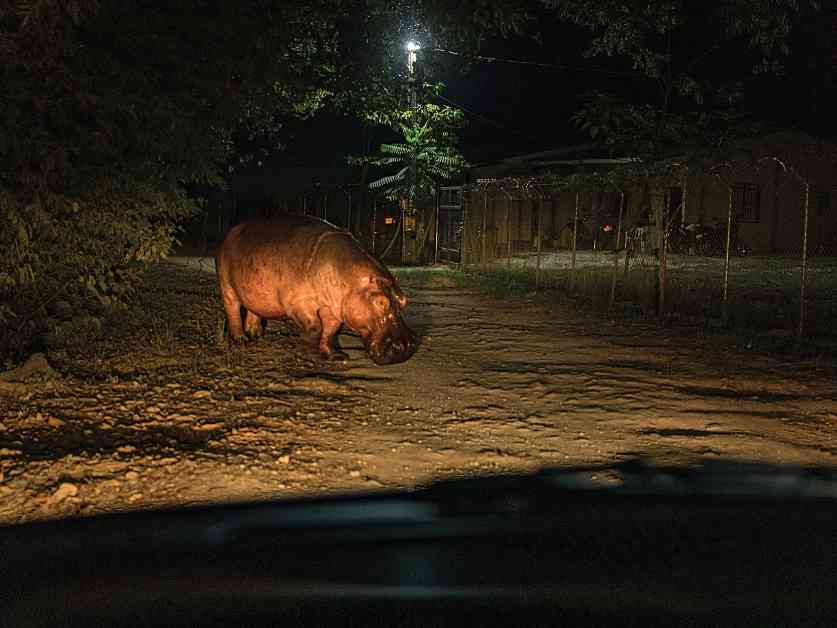The Impact of Pablo Escobar’s Abandoned Hippos on Colombian Wildlife
In the warm afternoon, Yamit Diaz Romero navigated a longboat along the Claro Cocorná Sur River in Colombia. The river, known for white-water rafting, was now a scene of a more unsettling phenomenon. With Alejandro Mira, a veterinarian, and Joshua Wilson, an American jujitsu champion, we encountered a pod of hippos. These hippos are descendants of Pablo Escobar’s exotic animal collection, left behind after his death in 1993.
Escobar’s hippos have thrived in Colombia, with the population now estimated to be around 169 to 200. Experts predict that this number could grow to 1,400 by 2040 if left unchecked. The hippos, originally from Africa, have posed a threat to local wildlife and agriculture. They have been known to attack farmers, destroy crops, and even cause accidents on highways.
Efforts to control the hippo population have included a sterilization program led by Cornare, a regional environmental agency. Veterinarians, like Alejandro Mira, have conducted castrations in the wild to slow down the population growth. However, the process is complex and challenging, with risks for both the hippos and the team performing the castrations.
While castration has shown some success, there are concerns about its long-term effectiveness. Some experts believe that a cull of the hippos may be necessary to manage the population. This controversial solution has sparked debates among conservationists and officials in Colombia. The presence of these hippos has raised questions about their impact on the local ecosystem and the need for sustainable solutions.
Despite the challenges, some locals have embraced the presence of Escobar’s hippos. Tourist businesses have sprung up, offering hippo-viewing excursions and attracting visitors. The hippos have become a symbol of resilience and adaptability in a region that has faced decades of violence and instability.
As the sun set and we watched the hippo behind Villa Sara roam the woods for food, the caretaker, Flor Daza, expressed a mix of fear and acceptance towards the animal. For many Colombians, living alongside Escobar’s hippos has become a part of their reality, a reminder of the complex legacy left behind by the infamous drug lord.
In the midst of debates about the future of these hippos, one thing remains clear – the impact of Escobar’s abandoned animals on Colombian wildlife is a complex and ongoing challenge that requires innovative solutions and a balance between conservation and management. The story of these hippos is a testament to the interconnectedness of human actions and the natural world, and the need for sustainable coexistence in a changing environment.






